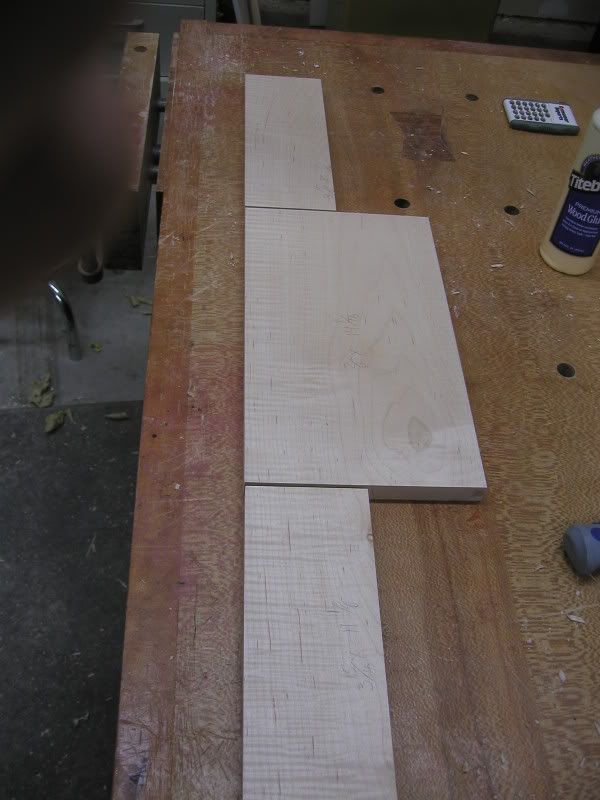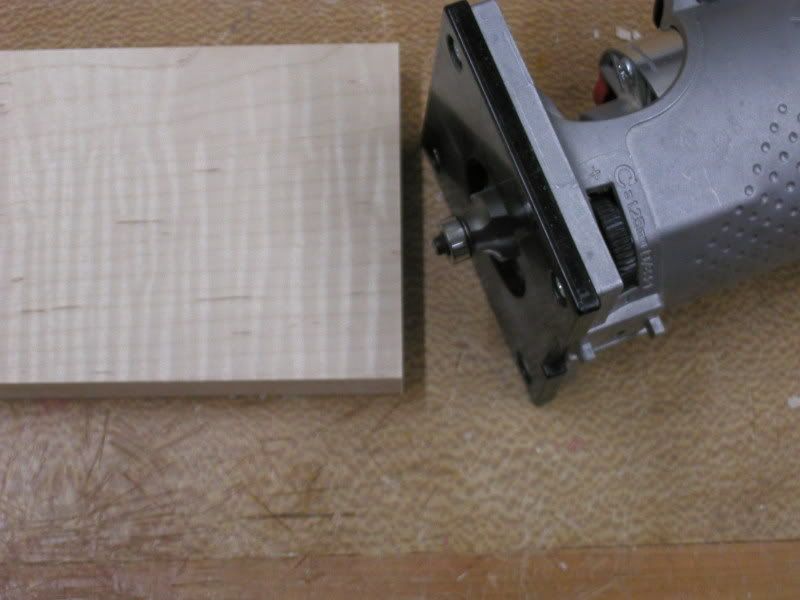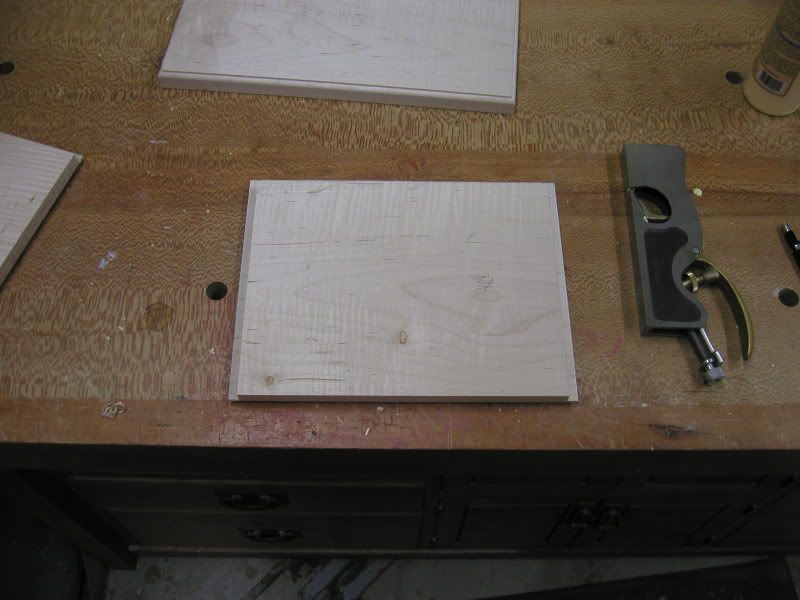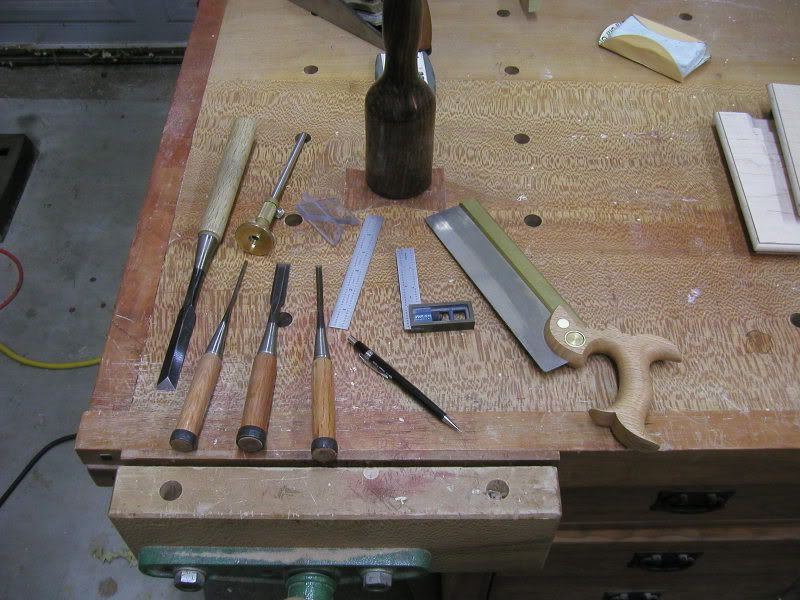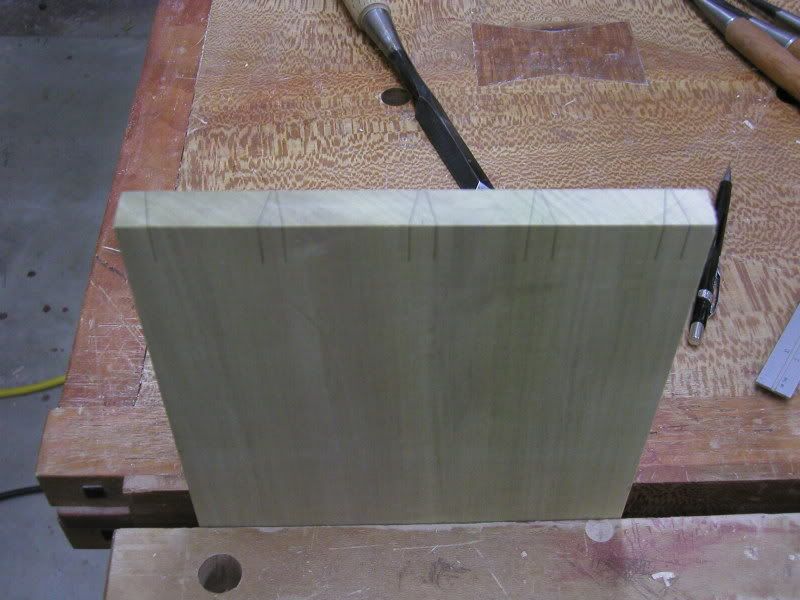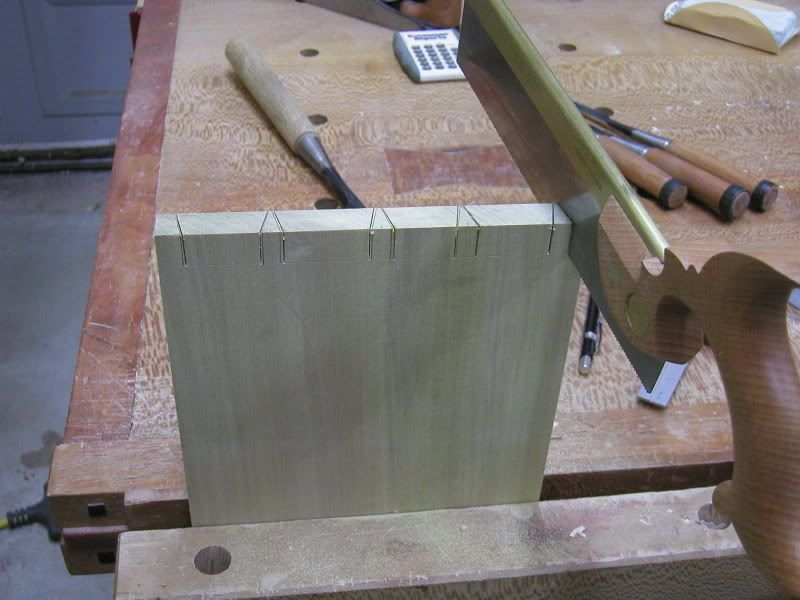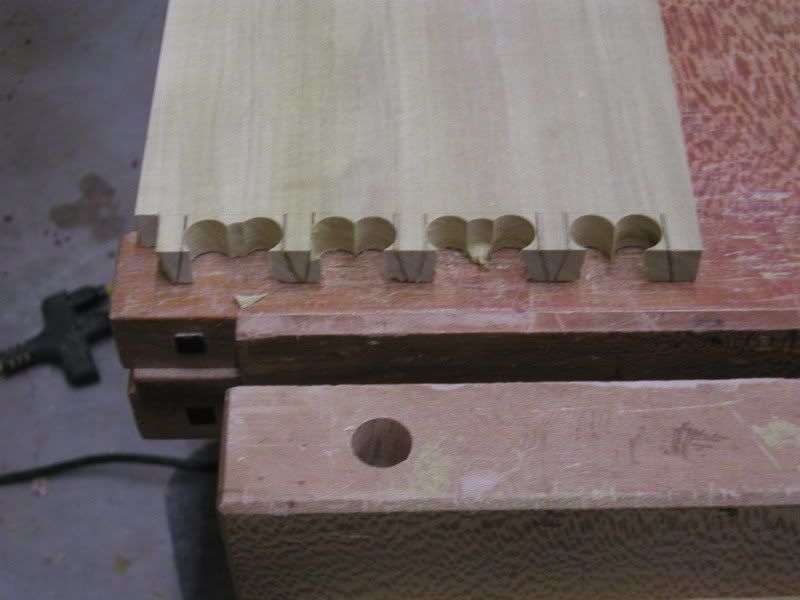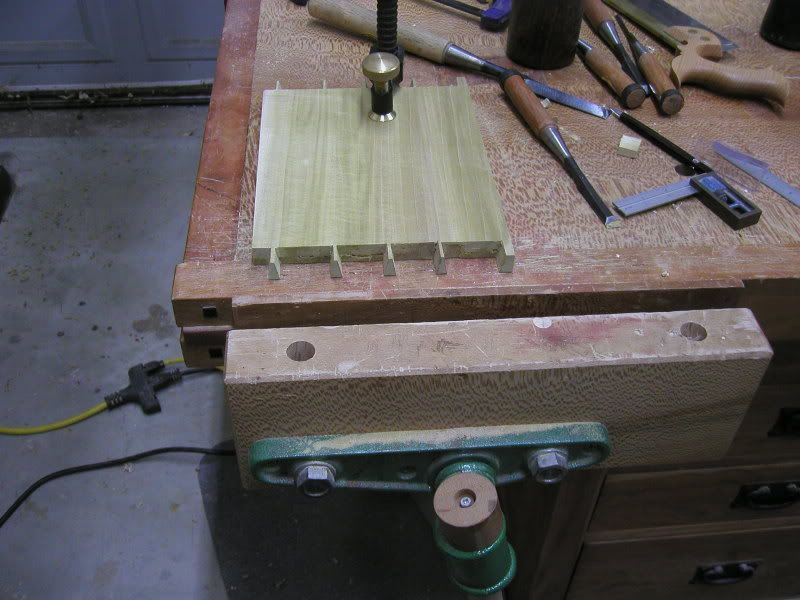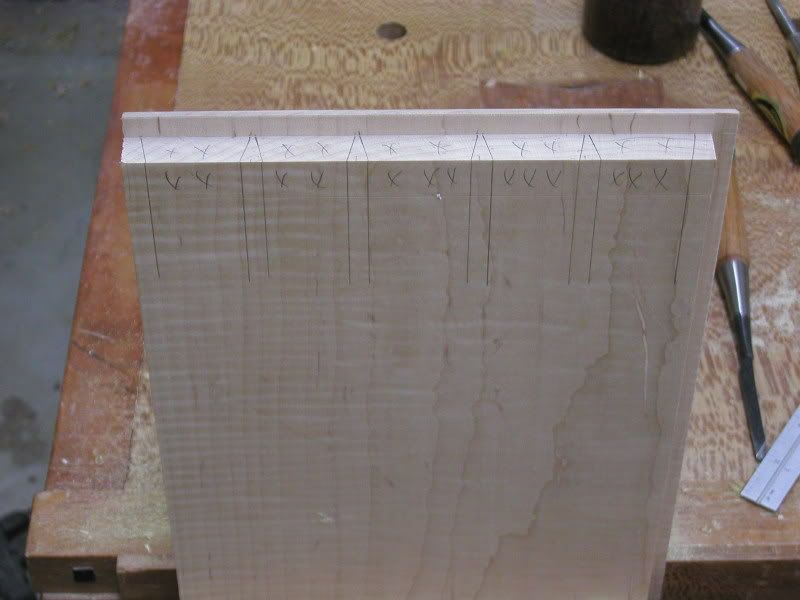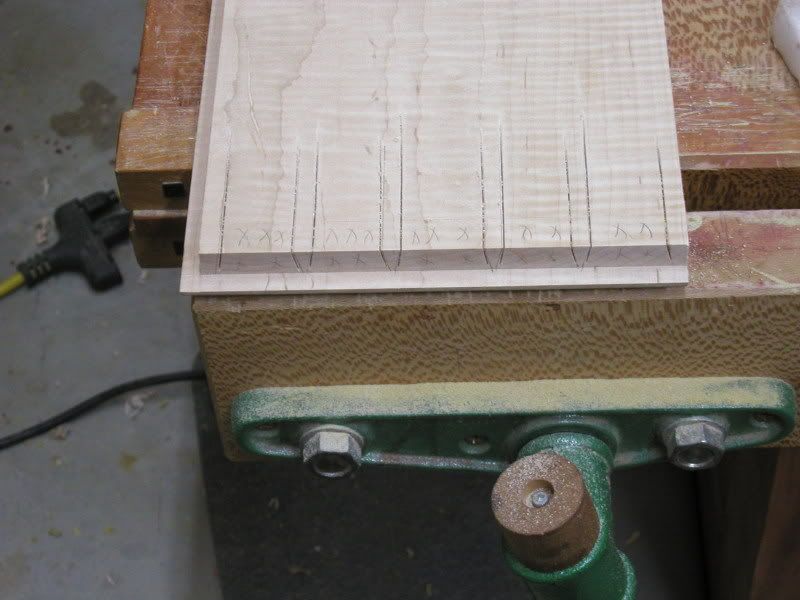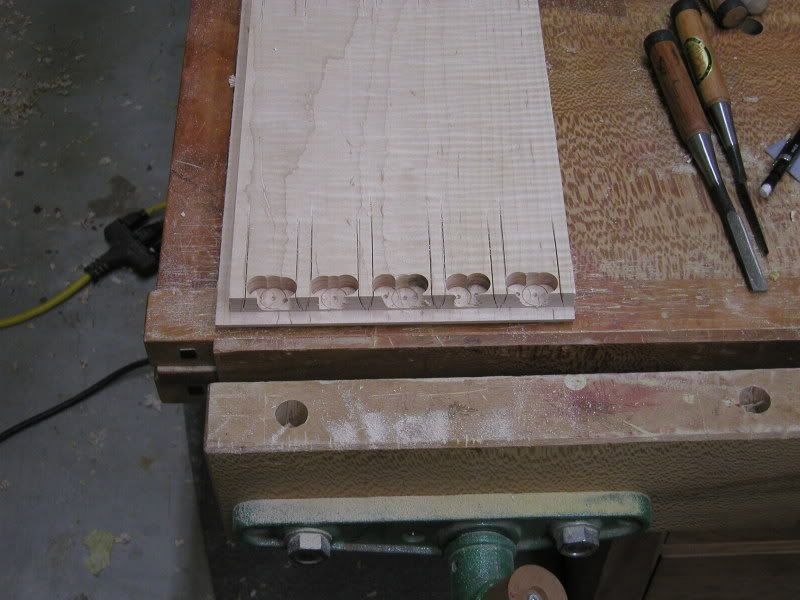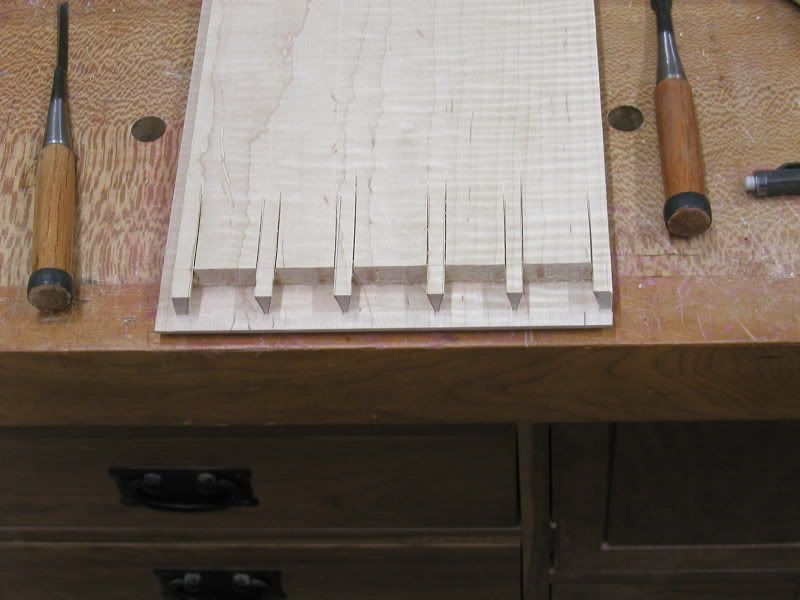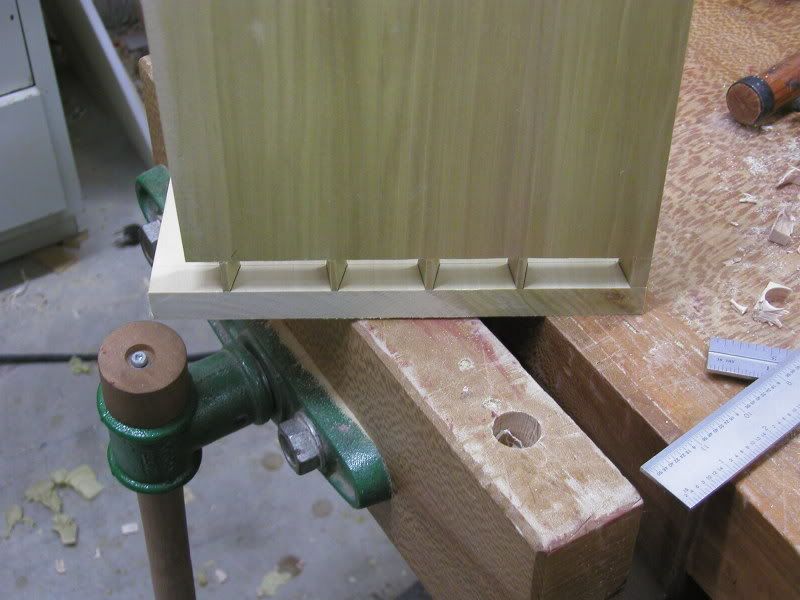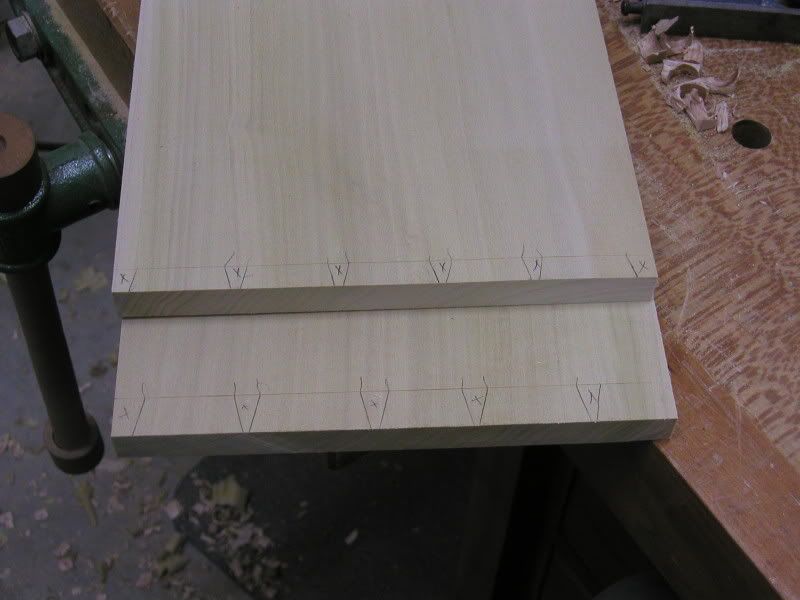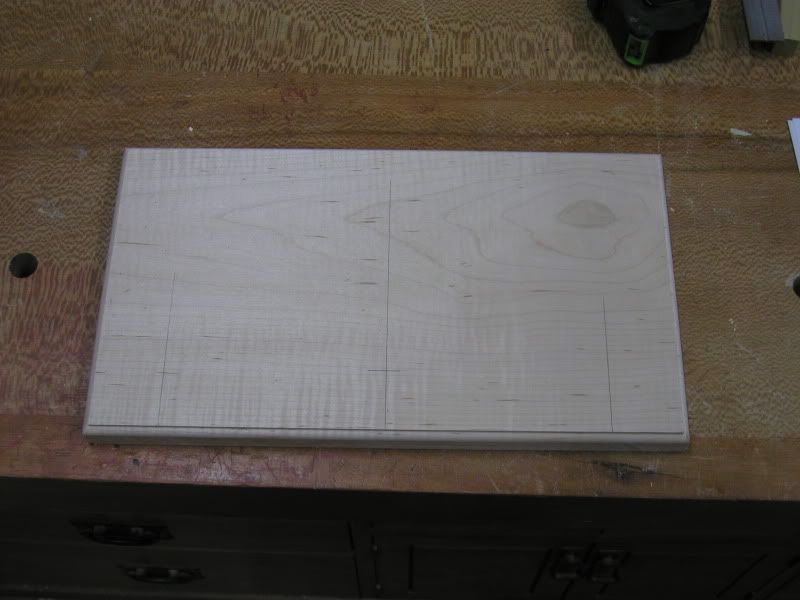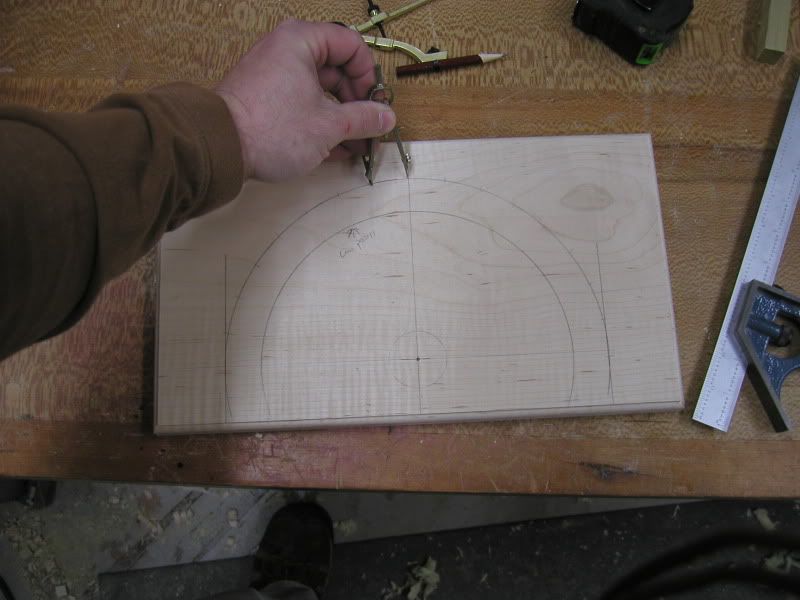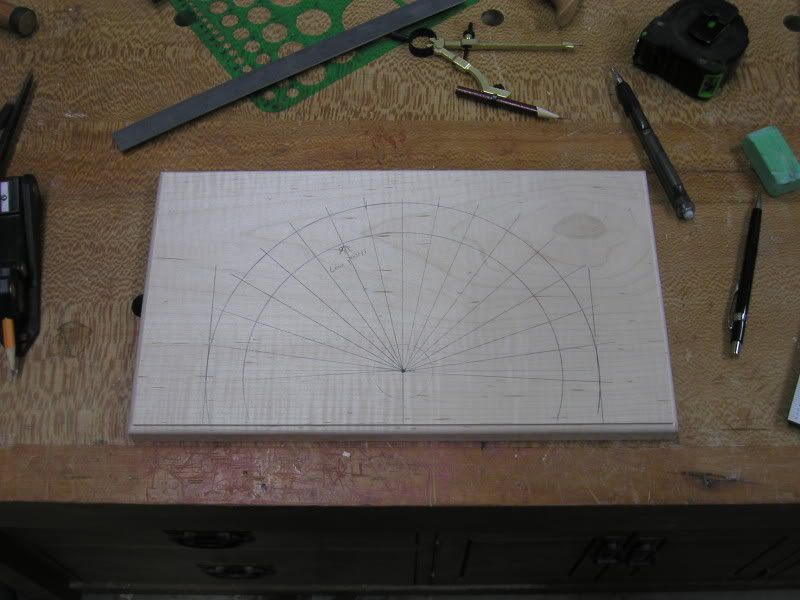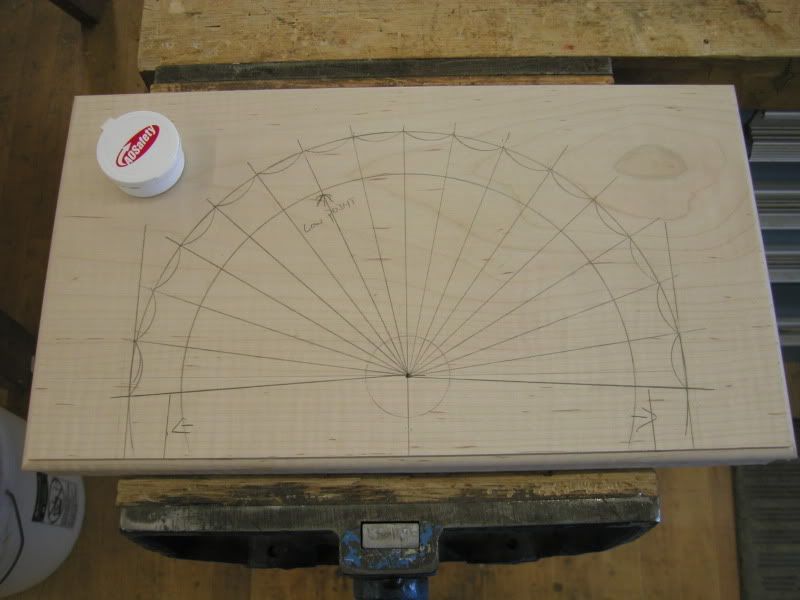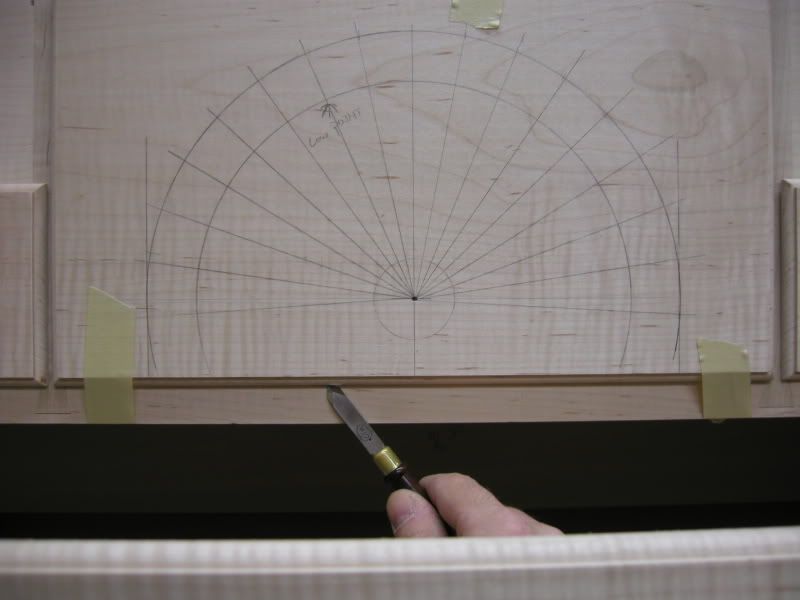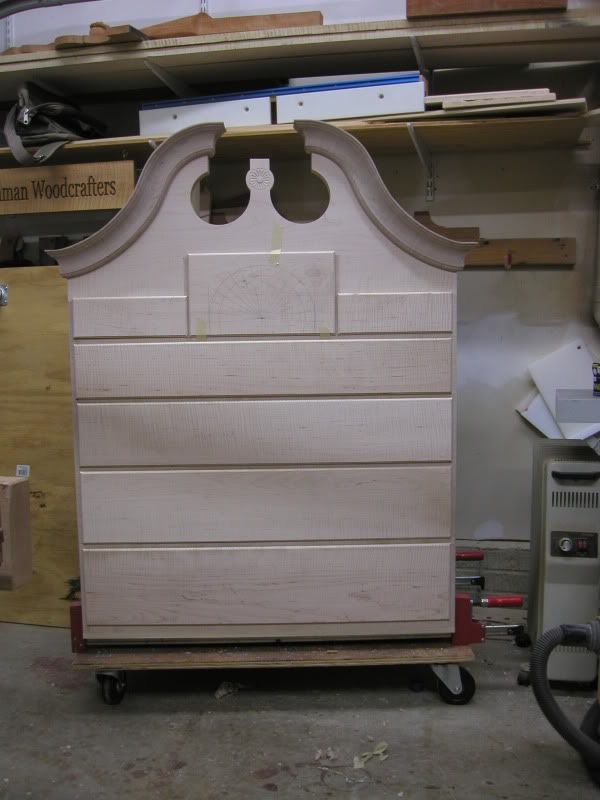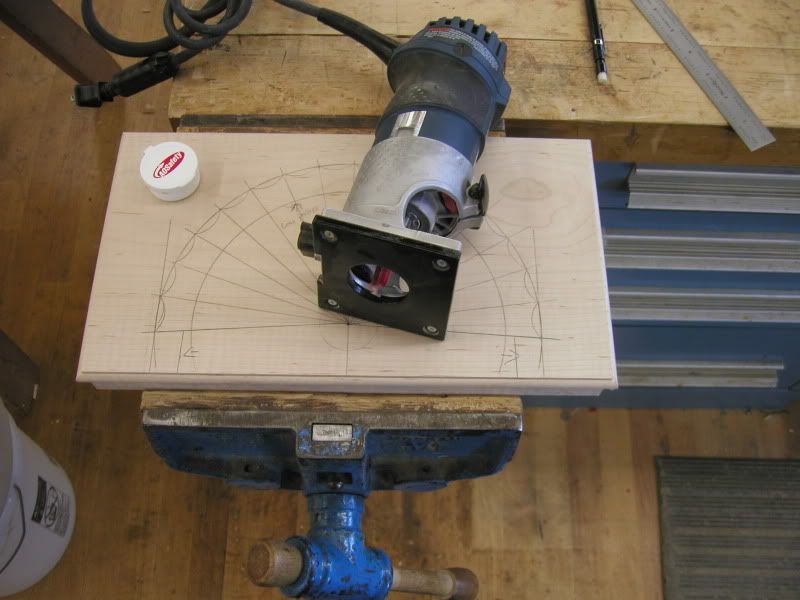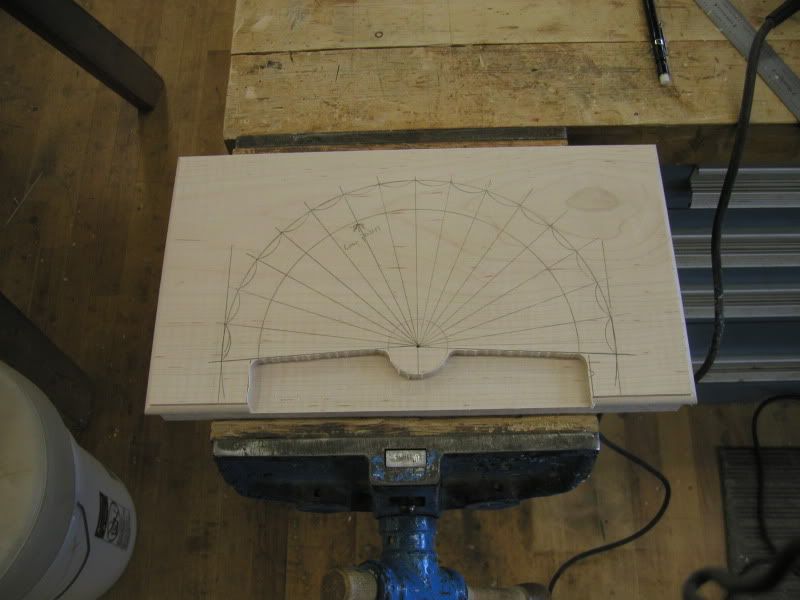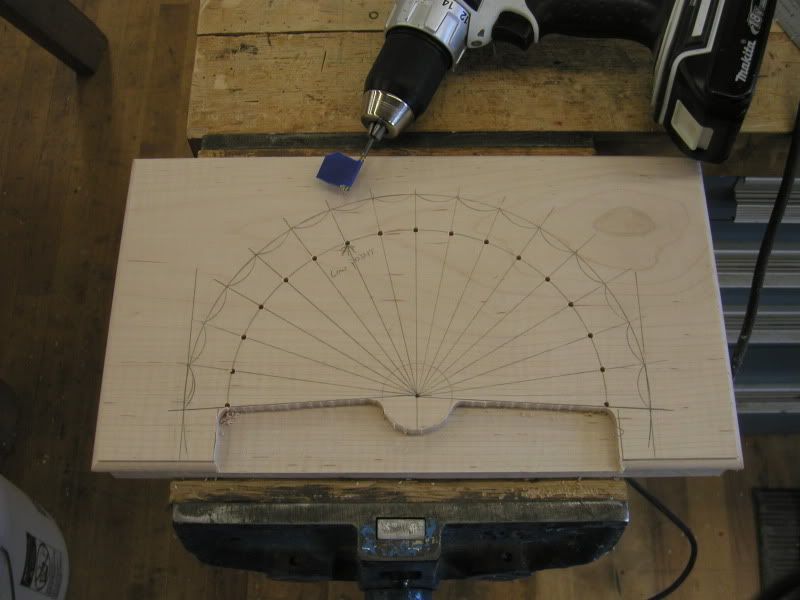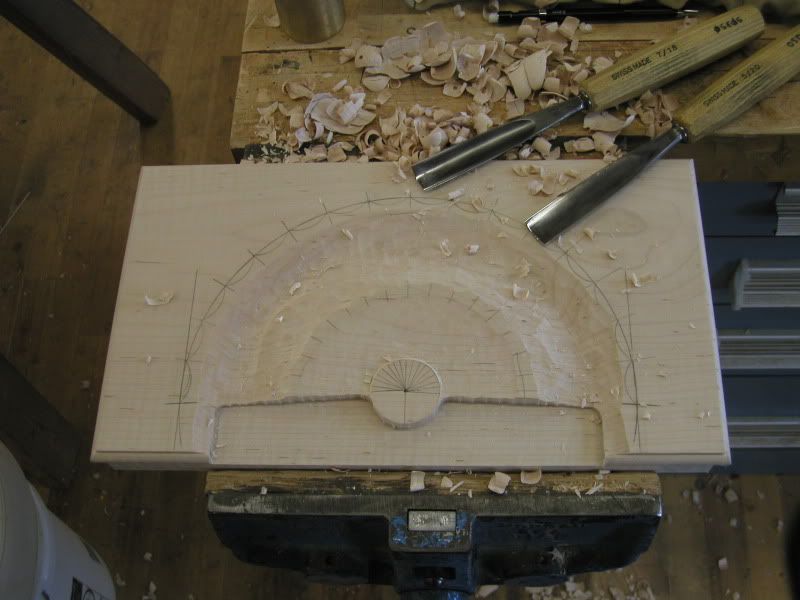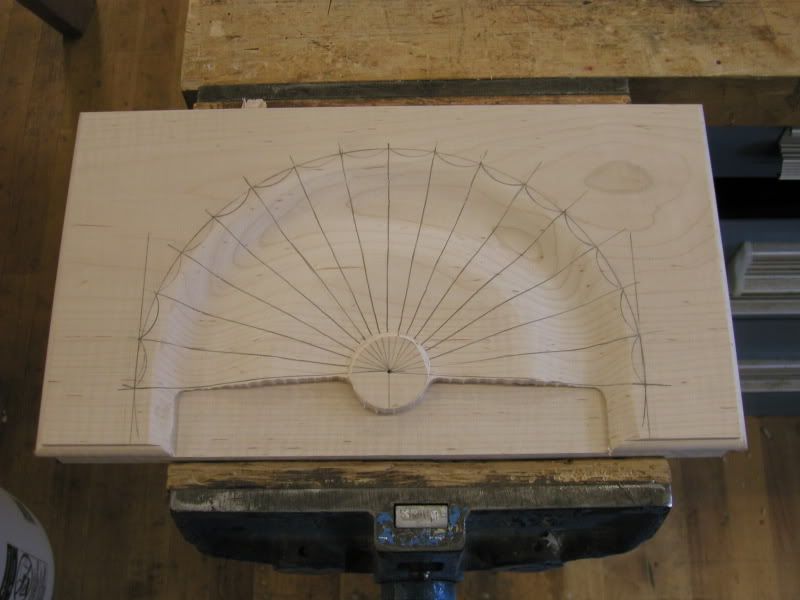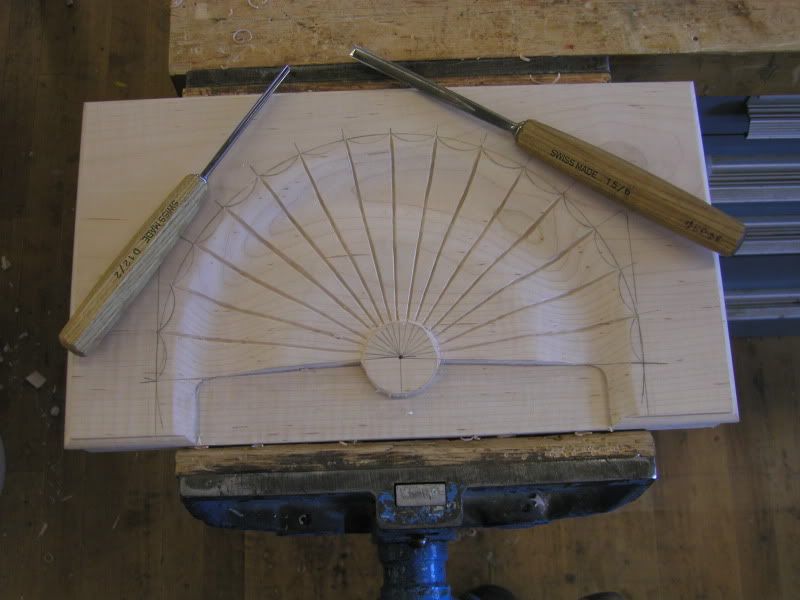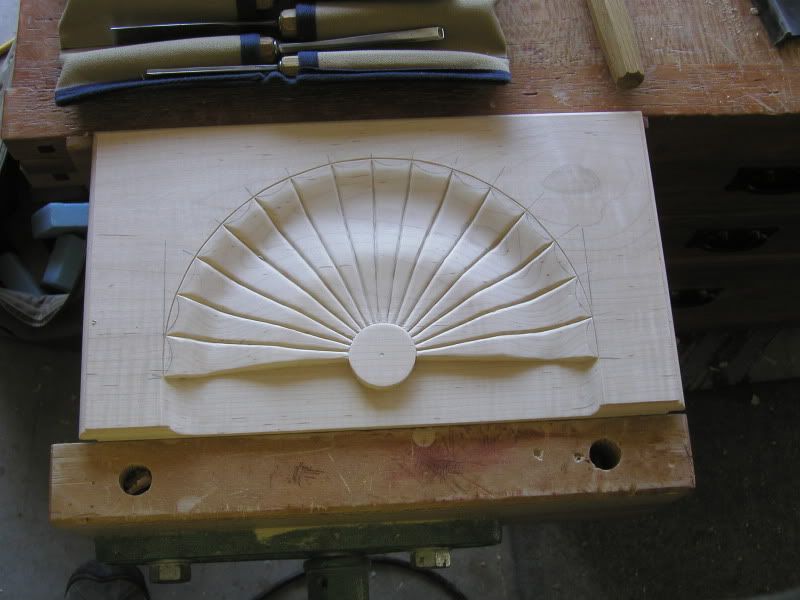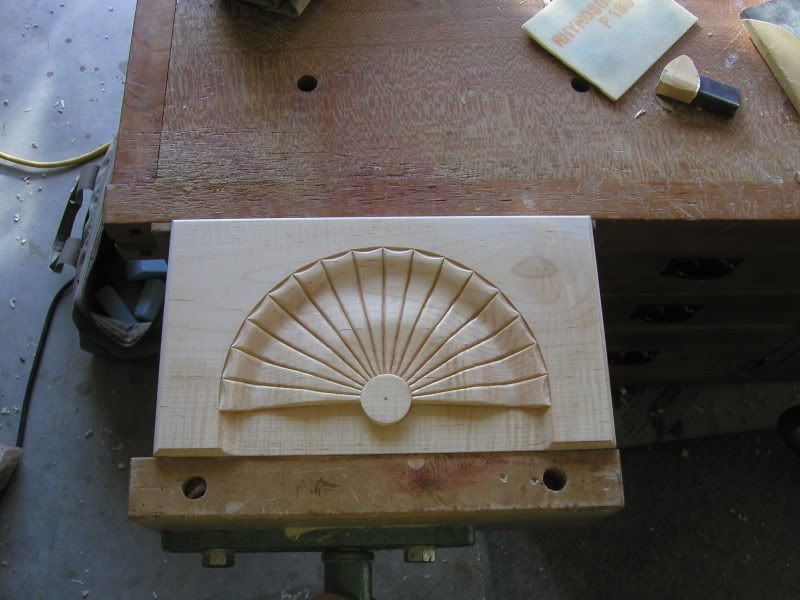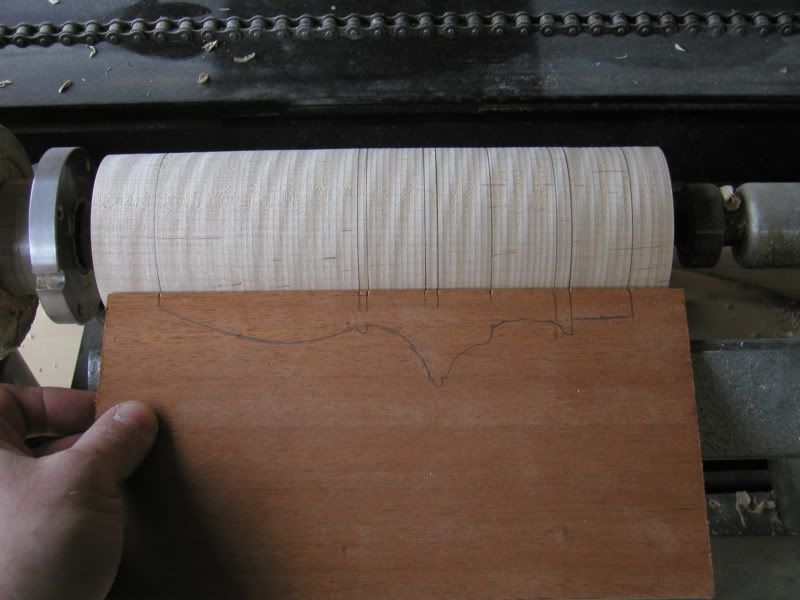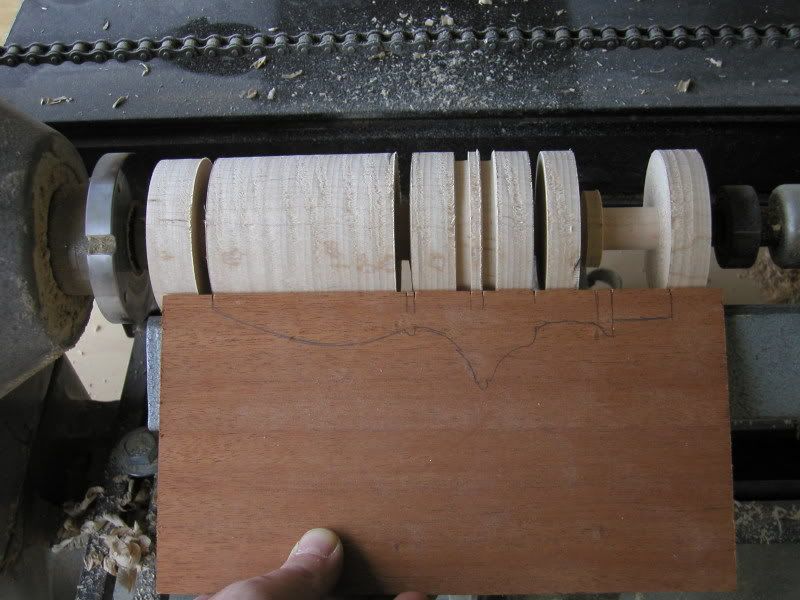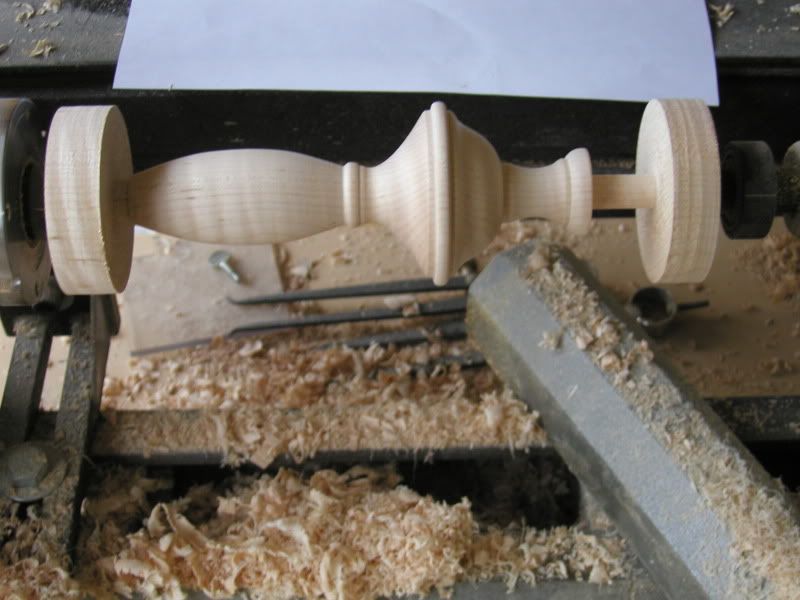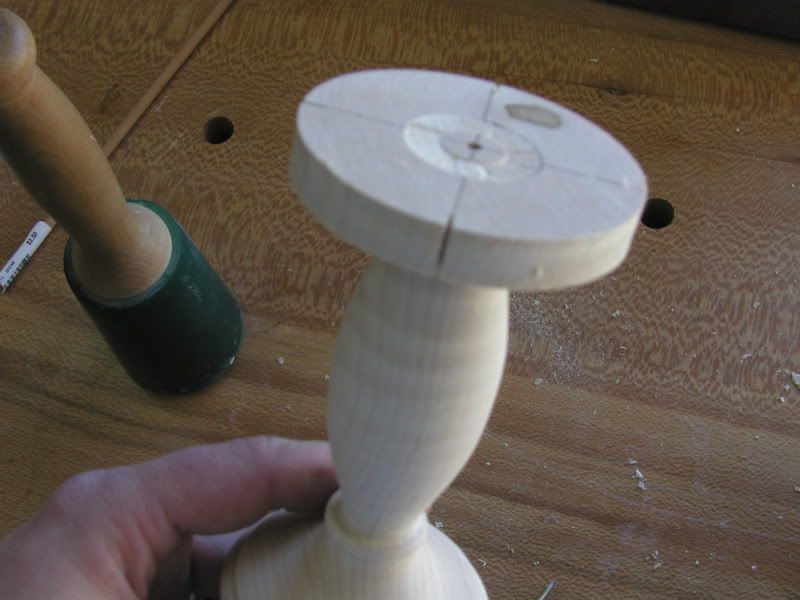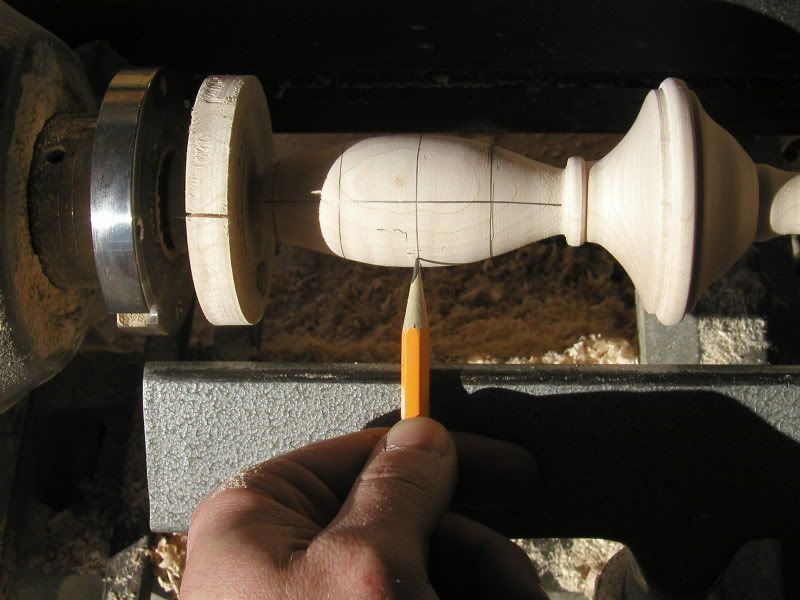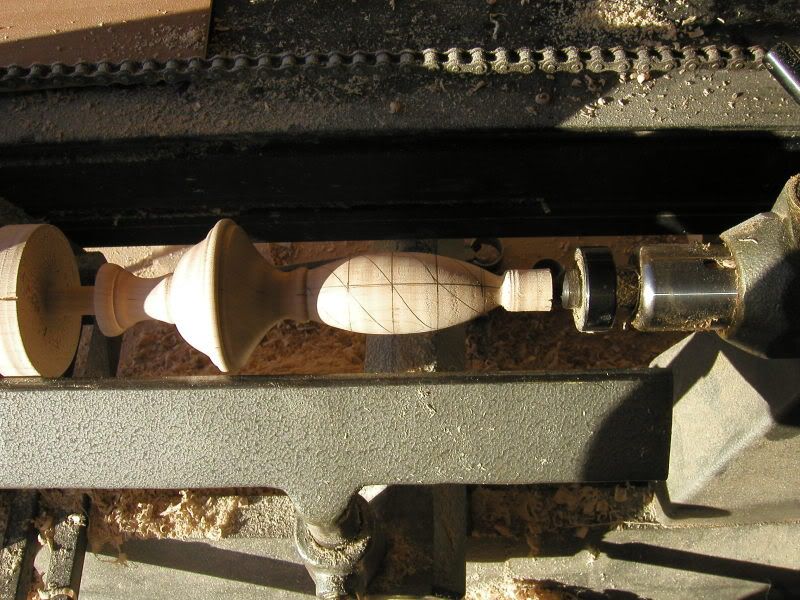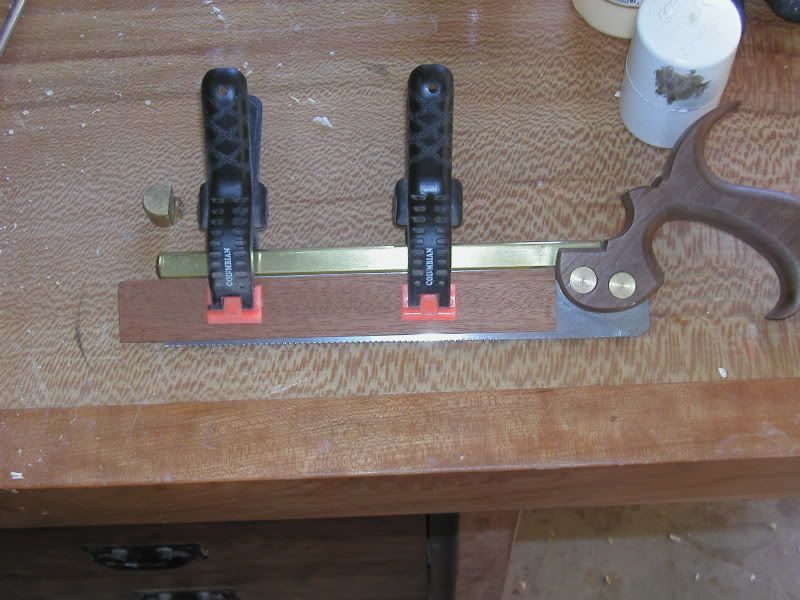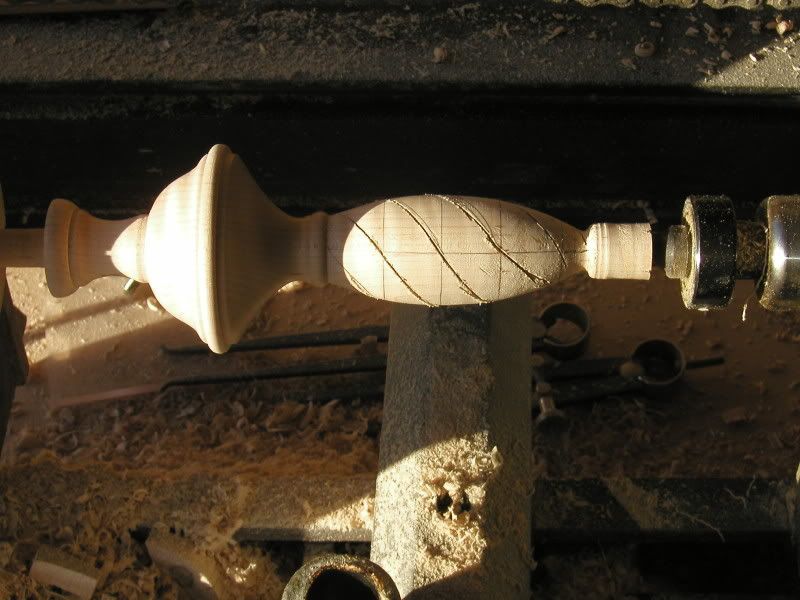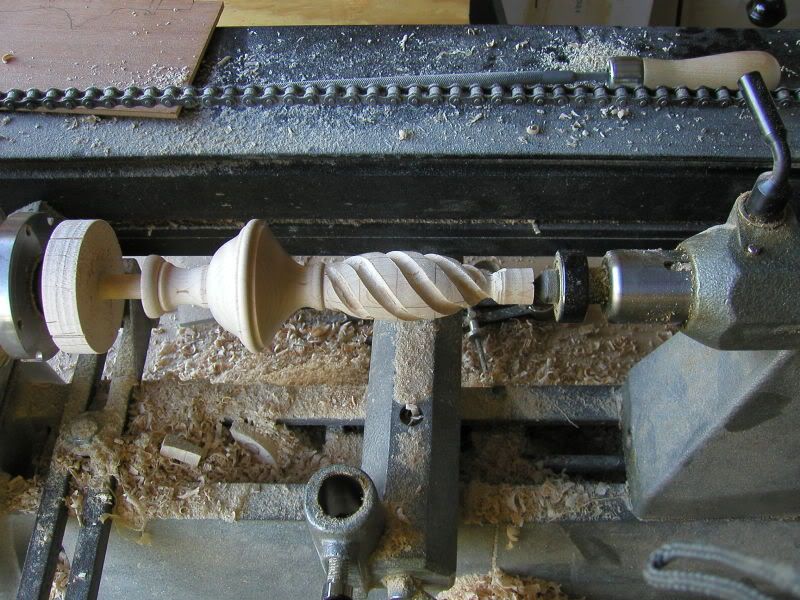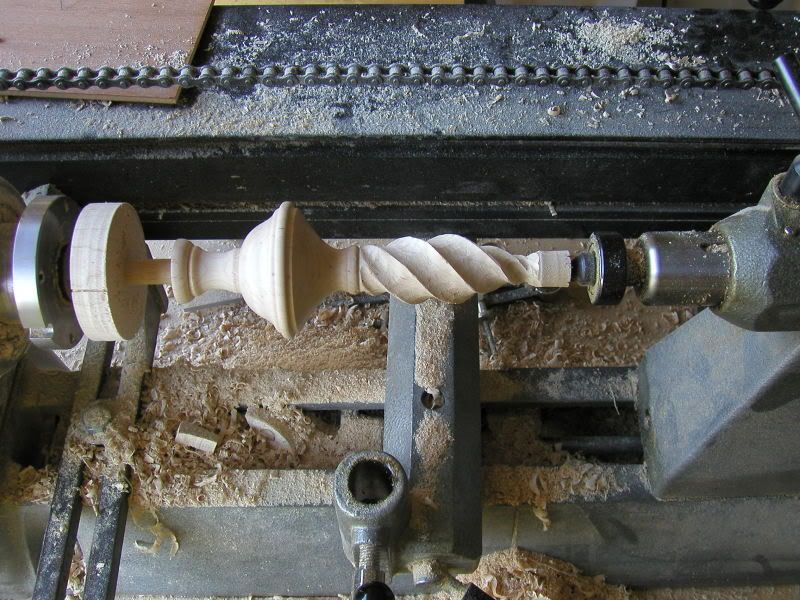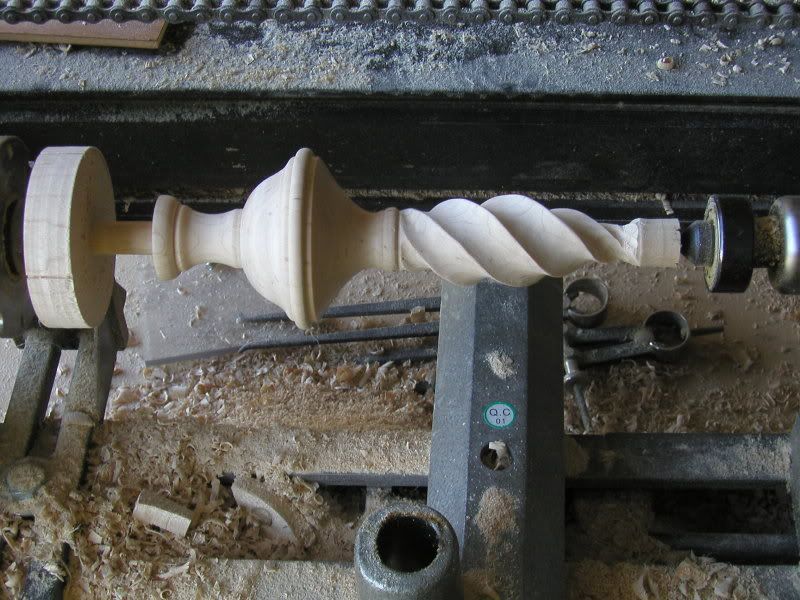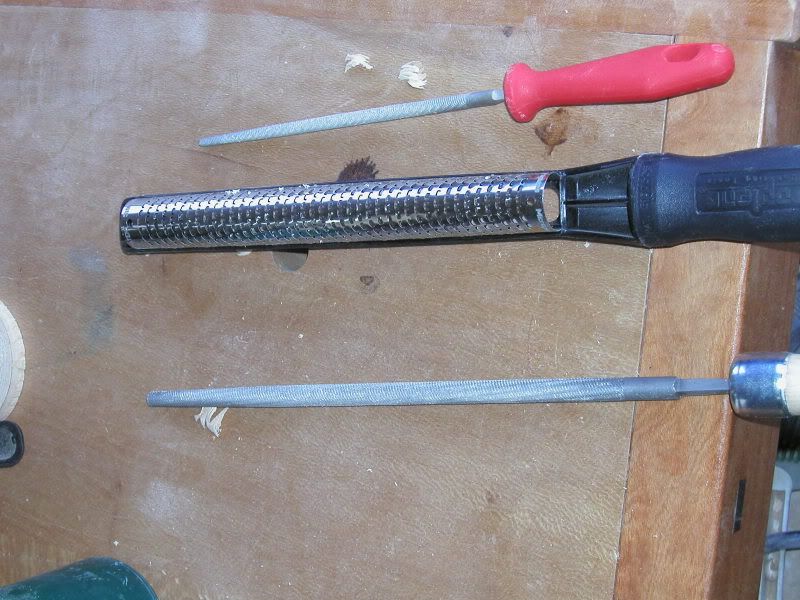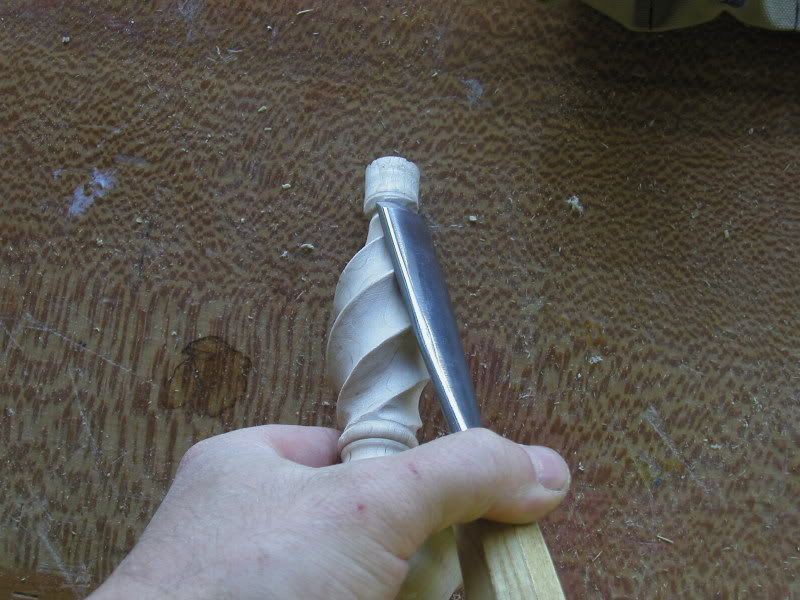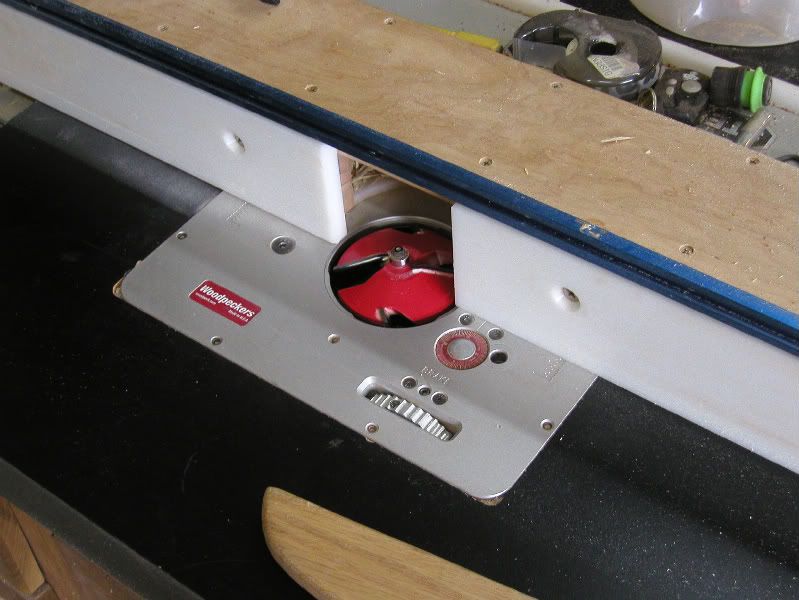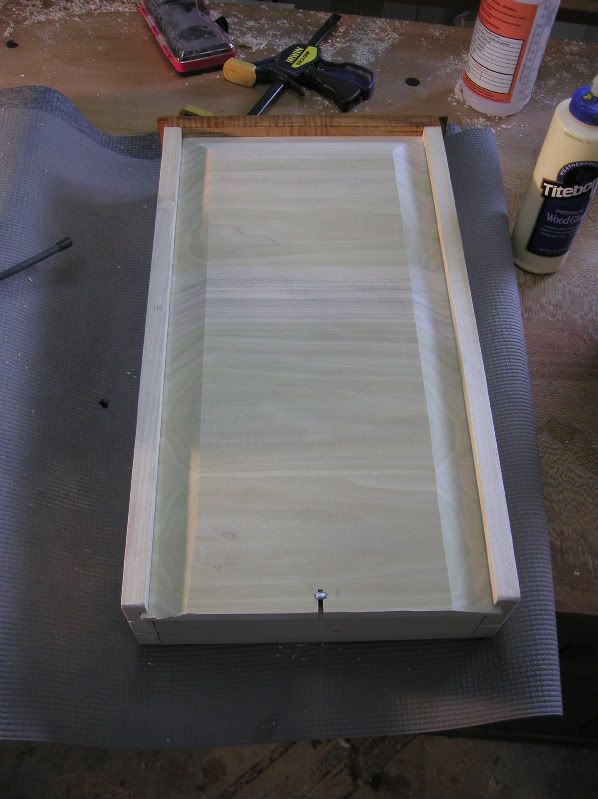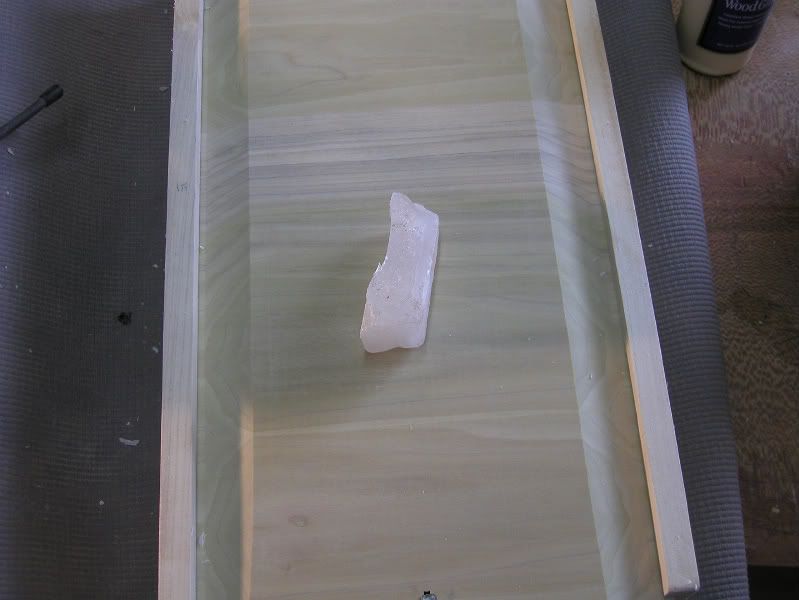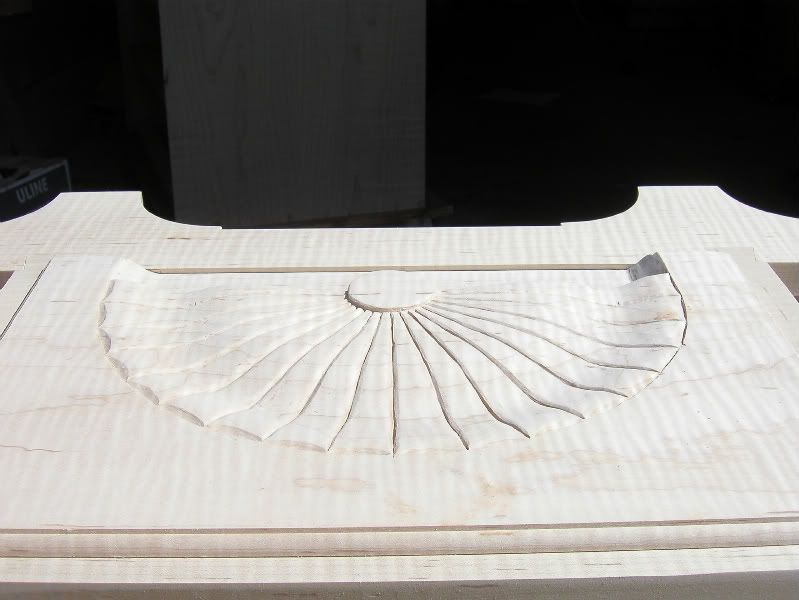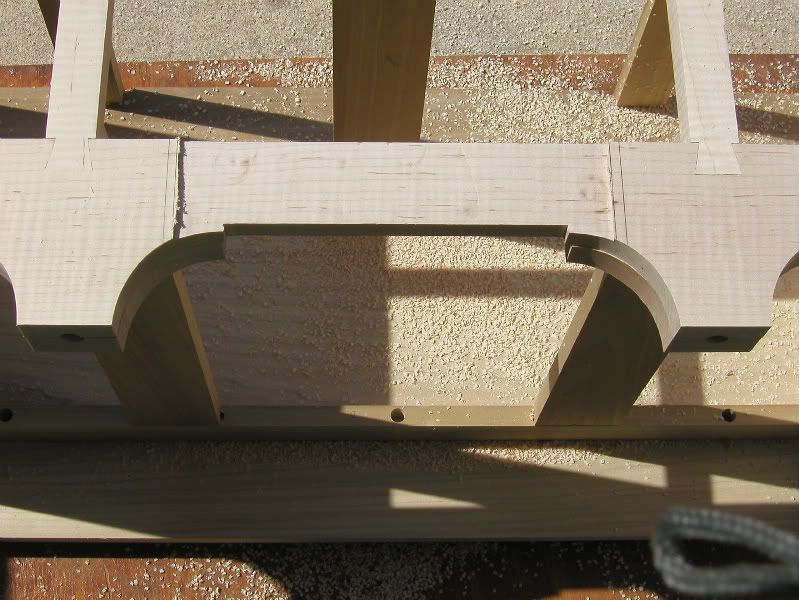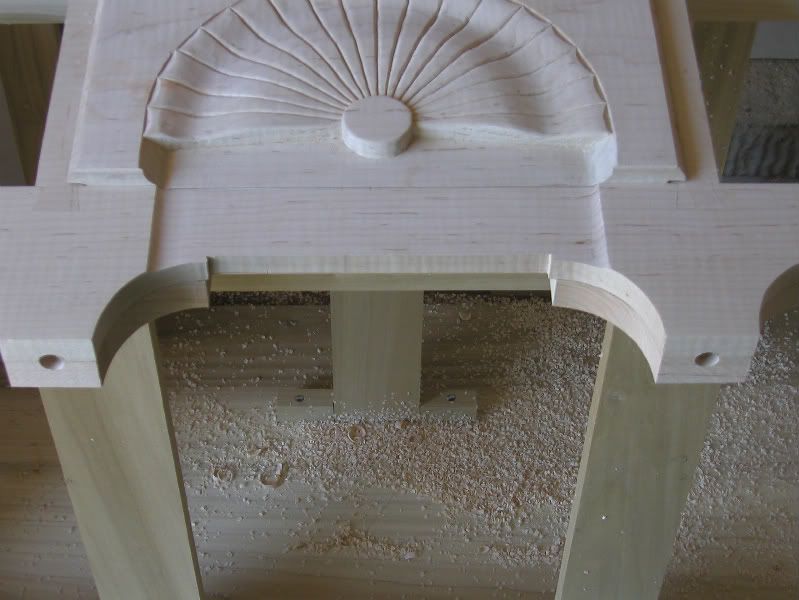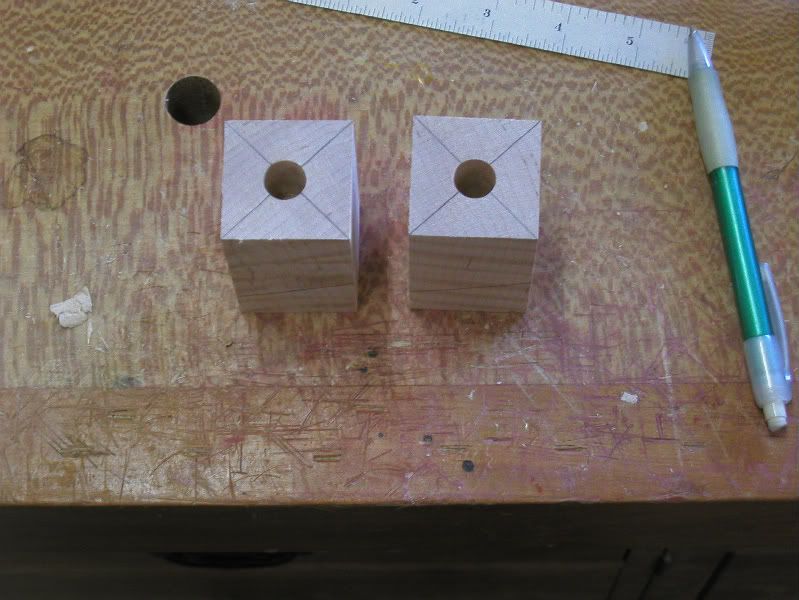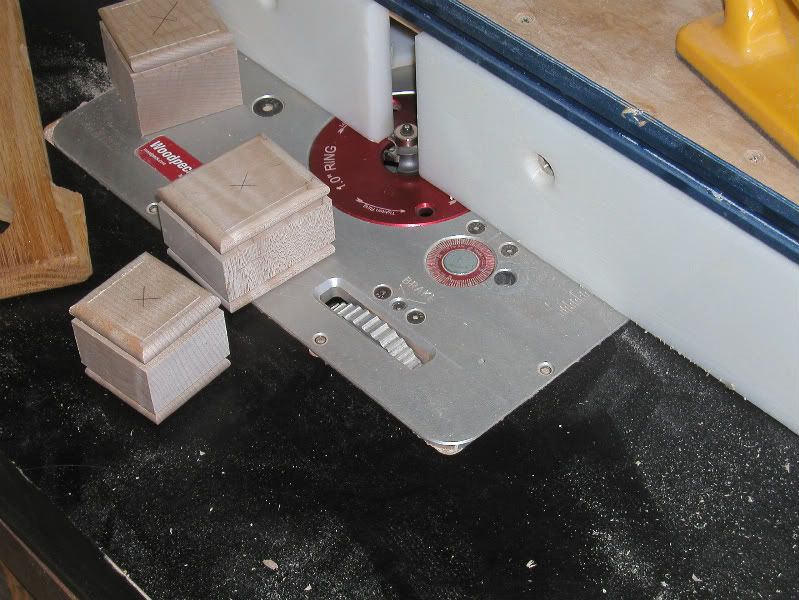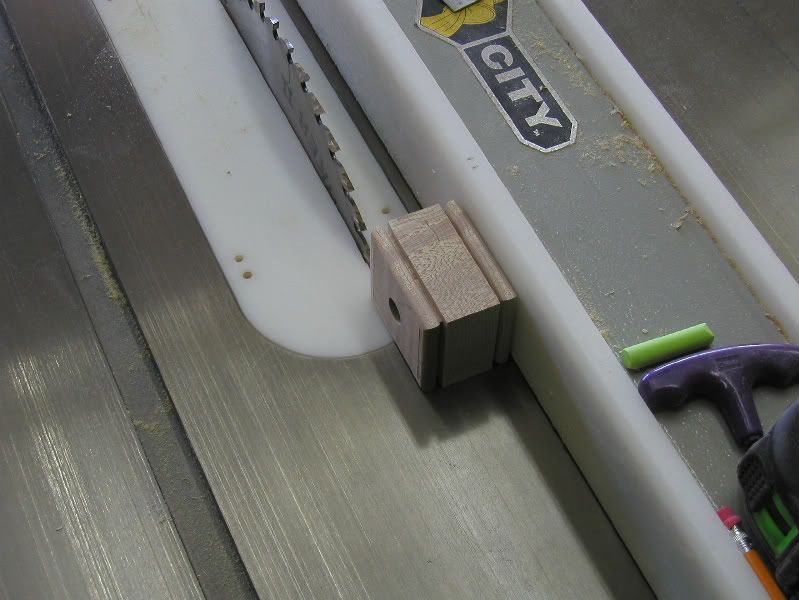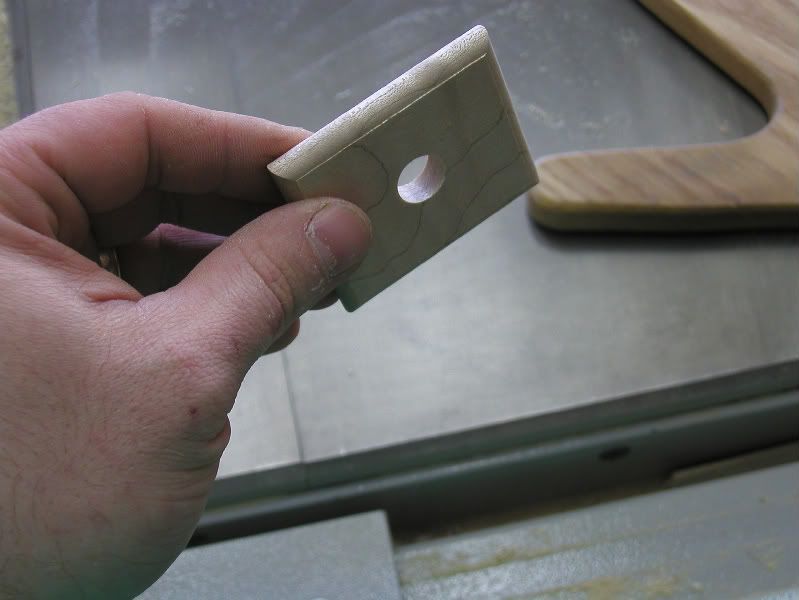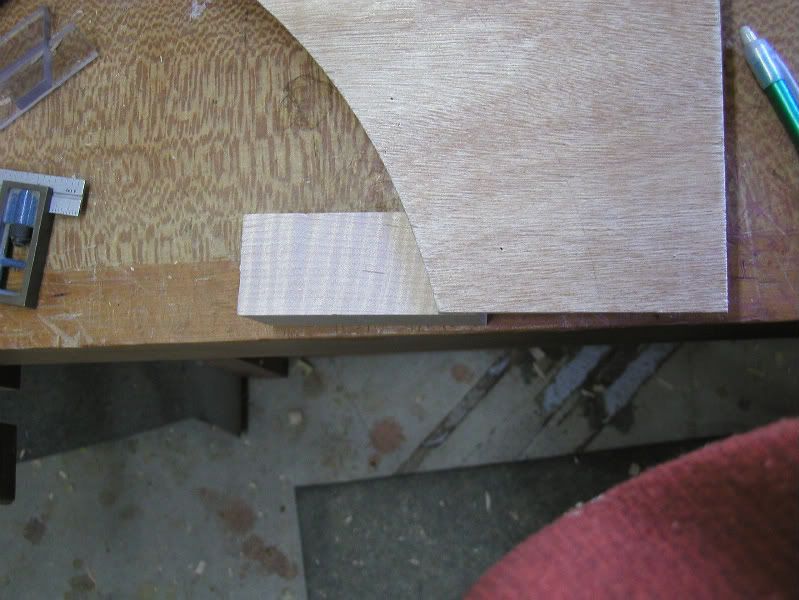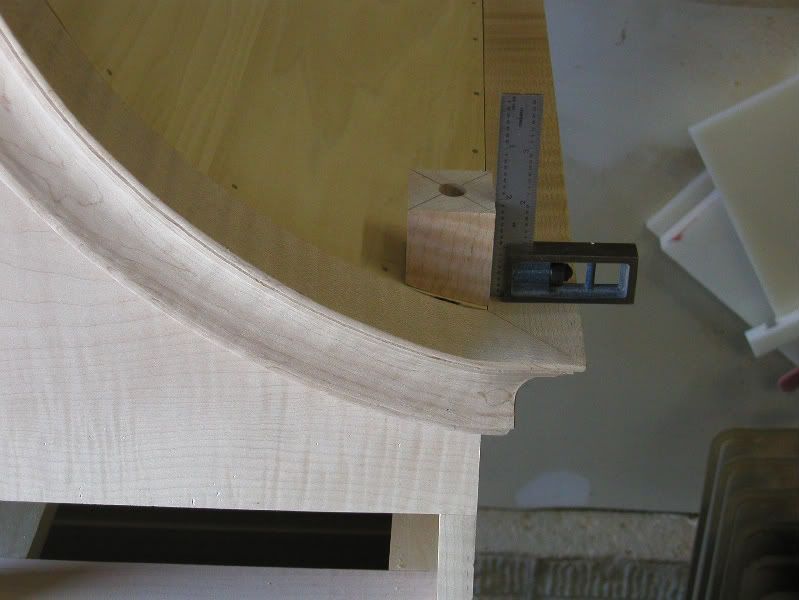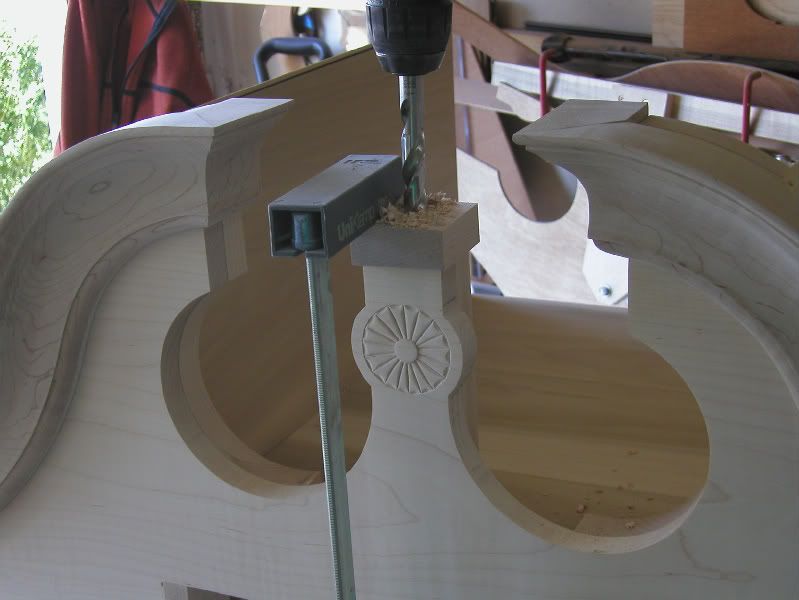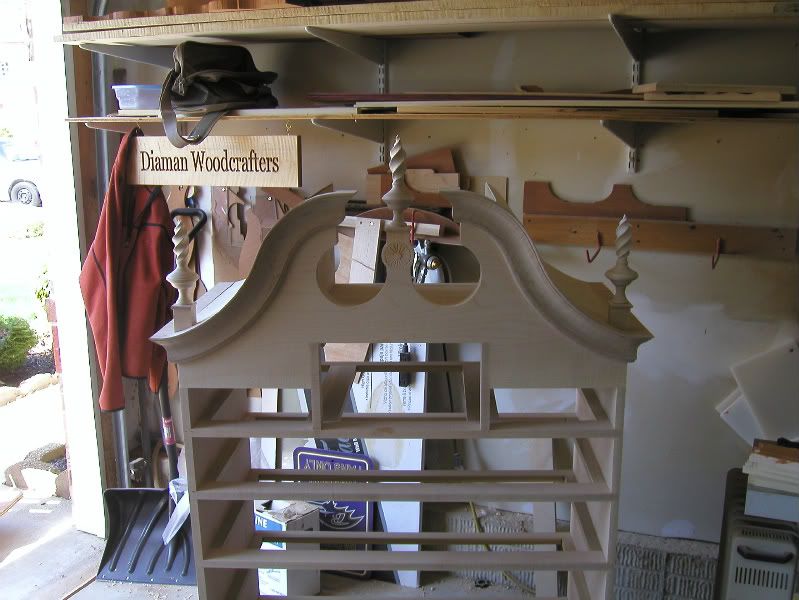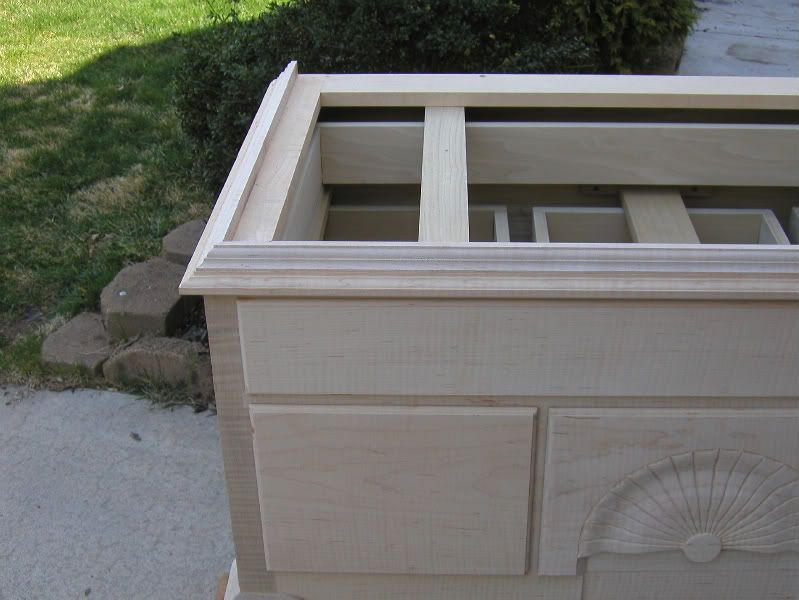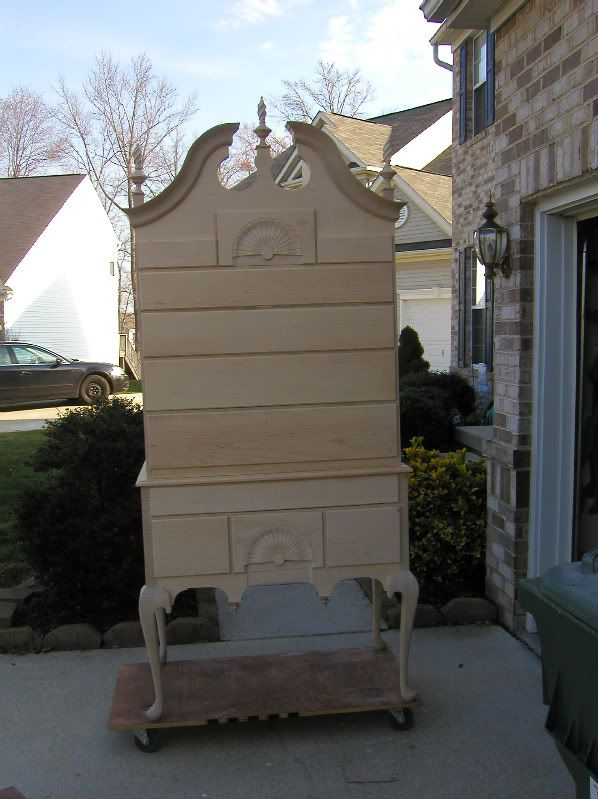
-
Astounding, Dave. What I would do to have 1% of your talent...
Thank you for taking the time to write this up - as others have said, you make it look so easy and present it such a clear manner. If you ever wrote a book like this, I'd buy it in a heartbeat. Your writing has that simple clarity that makes it look so easy.
-
-
Once the front and back are marked I like to use the bandsaw to cut out the pin sockets. A hand saw can be used also but the bandsaw is much faster for several reasons. The bandsaw has a much larger kerf so less waste is left in the pin sockets. This makes for much easier clean up since a hand saw has a much smaller kerf. Using the bandsaw also keeps you from extending the marks across the end of the board since the saw is already at 90 deg to the work piece. This may not seem like much but when you are cutting hundreds of dovetails it really adds up and can save you hours.
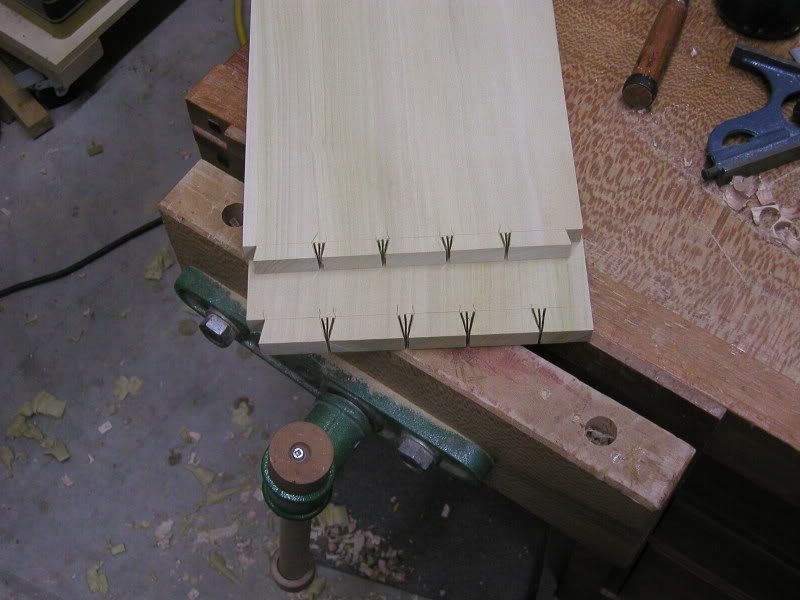
Now all that is left to do before glue up is to cut the dado that the drawer bottom will slide into. Once the drawer is glued up and square go back and trim the dovetails flush with a hand plane and its time to make the bottom. This drawer is just dry fit and still needs to be glued up and cleaned up.
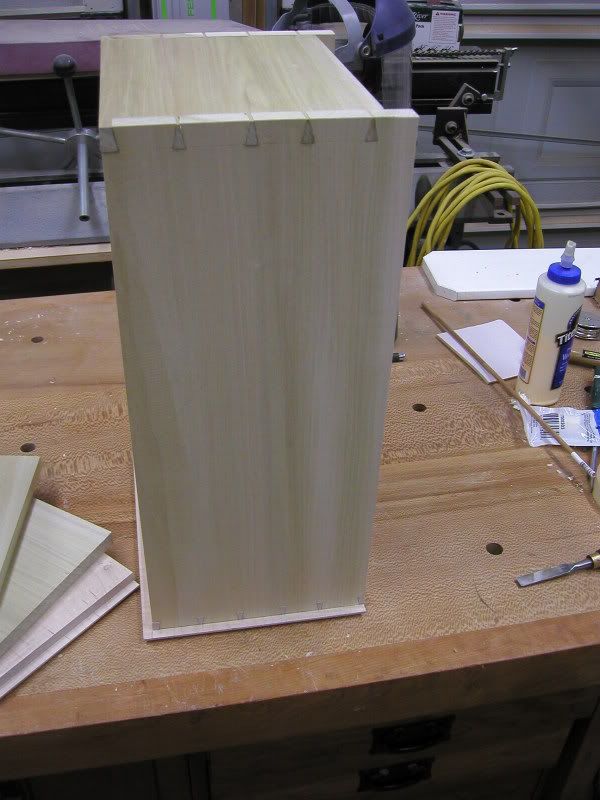
The bottom is made from a 5/8 thick solid wood panel. It is chamfered on three sides to slide into the Ό dados that were cut into the drawer. I will cover the drawer bottomas a little later in the build.
Diamanwoodcrafters
-
-
-
-
-
Dave this is such a great thread, thanks again for taking the time, the center portion of the gooseneck molding, are those both small mitred returns or did you profile the end of the molding?
-
They are small mitered returns. The just extend to the back of the blocking added in one of the previous steps.
Diamanwoodcrafters
-
Great stuff, Dave. Thank you for taking the time to put this together.
-
I enjoy watching it! and have bookmarked it just in case I dare to build one of these. Thanks for the step-by-step photos!
-
Hey guys, I have one or two more posts to go to finish everything up. As soon as I have time to get all the photo links in I will get the rest up. It has been a little crazy trying to make a few deadlines the last few days so I am falling a little behind.
Diamanwoodcrafters
-
You have my complete RESPECT!!! The tutorial is great. The piece is beyond great.
-
-
 Posting Permissions
Posting Permissions
- You may not post new threads
- You may not post replies
- You may not post attachments
- You may not edit your posts
-
Forum Rules





 Reply With Quote
Reply With Quote
